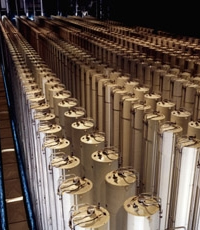|
How a Gas Centrifuge Works
Gas centrifuges are now the method of choice for enriching uranium. These spinning cylinders are used to increase the concentration of U-235, the fissionable isotope of uranium, to make it usable as fuel in nuclear reactors or as warheads in nuclear weapons. This section describes how gas centrifuges work, discusses the theoretical principles of isotope separation and considers the engineering challenges in constructing and optimizing the machines. Furthermore, this section looks at what is needed to operate an entire enrichment plant (how centrifuges operate in cascades), and how the possibility of dual use of enrichment technology creates opportunities for nuclear weapons proliferation.
|
 |